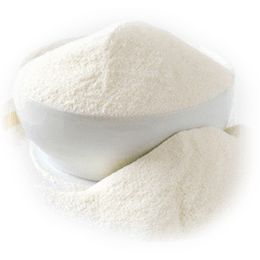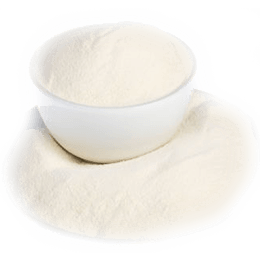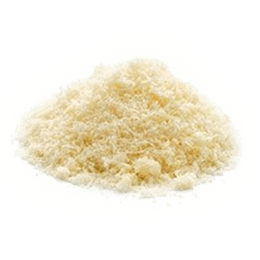Milk Derivative Additive

1- Milk powder without fat
Explanation:It is a dairy product obtained by drying skimmed milk, rich in protein, containing at most 8% water, low in energy density, soluble in fat, insufficient in vitamins, and used in products such as milk substitute feed. Milk powder is produced from fresh and healthy milk with all necessary quality controls without using any additives or manufacturing aids. Its production is done in fully automatic and computer controlled systems without human touch. Milk is pasteurized first. Milk concentrate is obtained by taking almost all of the liquid in the milk with vacuum evaporators without destroying the proteins and beneficial substances it contains. Milk concentrate is dried by spraying on dry hot air with an atomizer. Dried milk particles are separated from the air, cooled and stored in special packages. During all production stages, samples are taken from certain points and continuous quality control is carried out. It is obtained by evaporation at the appropriate temperature and pressure. Since milk powder is water soluble, it is sold to consumers. By adding water at a ratio of 1 to 9 to milk powder, a normal milky product can be obtained. Milk powder consumption is preferred in places where milk supply or storage is difficult. Since milk powder gives the same aroma as milk, but is cheaper than using milk, milk powder is often preferred in dairy industries. In addition, milk powder is preferred because of the convenience of storage conditions and the absence of spoilage of the product.
Usage areas: Milk powder can be added in industrial pastry and dough processes, for the product quality in the production of biscuits, wafers, etc., when the liquid milk is not desired to make the product too thin. Milk powder is effective in the production of baby food. Milk powder is used to prepare the contents of dried ready-made products such as instant soup. Milk powder is also included in most of the formulas prepared for animals. The content of coffee creams is made using milk powder. In addition, milk powder is used as a thickener in many businesses that produce milk such as ice cream, confectionery, cheese, yogurt.
2- Oily milk powder
Explanation: It is a dairy product obtained by drying the milk with fat, rich in protein, low in energy density, soluble in fat, and insufficient in terms of vitamins, such as milk substitute feed. Milk powder is produced from fresh and healthy milk with all necessary quality controls without using any additives or manufacturing aids. Its production is done in fully automatic and computer controlled systems without human touch. Milk is pasteurized first. Milk concentrate is obtained by taking almost all of the liquid in the milk with vacuum evaporators without destroying the proteins and beneficial substances it contains. Milk concentrate is dried by spraying on dry hot air with an atomizer. Dried milk particles are separated from the air, cooled and stored in special packages. In all production stages, samples are taken from certain points and continuous quality control is carried out. It is obtained by evaporating at the appropriate temperature and pressure. Since milk powder is water soluble, it is sold to consumers. By adding 1 to 9 water to milk powder, a normal milky product can be obtained. Milk powder consumption is preferred in places where milk supply or storage is difficult. Since milk powder gives the same aroma as milk, but is cheaper than using milk, milk powder is often preferred in dairy industries. In addition, milk powder is preferred because of the convenience of storage conditions and the absence of spoilage of the product.
Usage areas: Milk powder can be added in industrial pastry and dough processes, for the product quality in the production of biscuits, wafers, etc., when the liquid milk is not desired to make the product too thin. Milk powder is effective in the production of baby food. Milk powder is used to prepare the contents of dried ready-made products such as instant soup. Milk powder is also included in most of the formulas prepared for animals. The content of coffee creams is made using milk powder. In addition, milk powder is used as a thickener in many businesses that produce milk such as ice cream, confectionery, cheese, yogurt.


3- Whey Powder
Explanation: Whey is the liquid remaining after the separation of casein and fat as coagulum during cheese making, the composition of which changes depending on the type of cheese produced and the making technique. Whey; It contains lactose, mineral substances, vitamins, proteins and small amounts of milk fat. Of these, the most important are Whey proteins. Whey proteins are more important than other proteins, not only because of their biological value, but also because of their high content of sulfur-containing amino acids. Whey is a precious water due to these high values in its content. Whey, which has a highly nutritious content, is pasteurized and purified by advanced technology, and Whey powder is produced at the end of the production stages.
Usage areas: It is used as an additive in the beverage and food industry to enrich the nutritional and protein value of foods, to add extra flavor to foods. Whey powder also extends the shelf life of packaged products. Therefore, it is a very productive blessing for the food industry. Whey powder is used in candies, bakery products, biscuits, chocolates, and dairy industries. Using the required amount of Whey powder creates a desired attractive color pigmentation in the crust of the bread, increases the nutritional value of the bread and ensures that the structure of the inside of the bread is thinner and of higher quality. It is also used as a protein drink by adding fruit flavors. It is preferred by body builders as it increases growth hormone secretion due to its rapid digestion and richness in protein in sports nutrition. It is also used in pharmaceutical industry, in pharmaceutical industry, as it balances the sugar level of patients with diabetes type 2, as it strengthens the immune system and prevents prostate growth.
